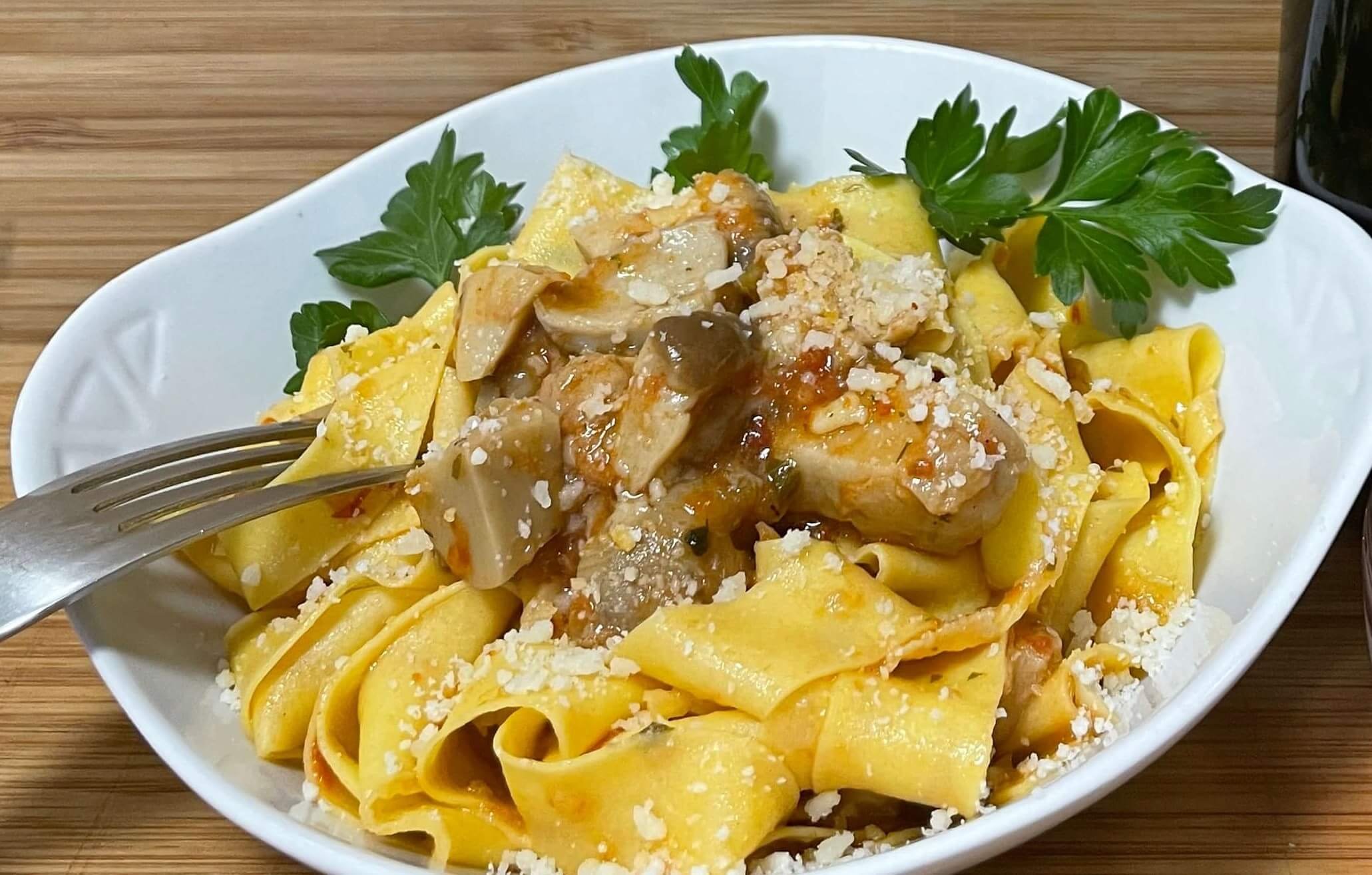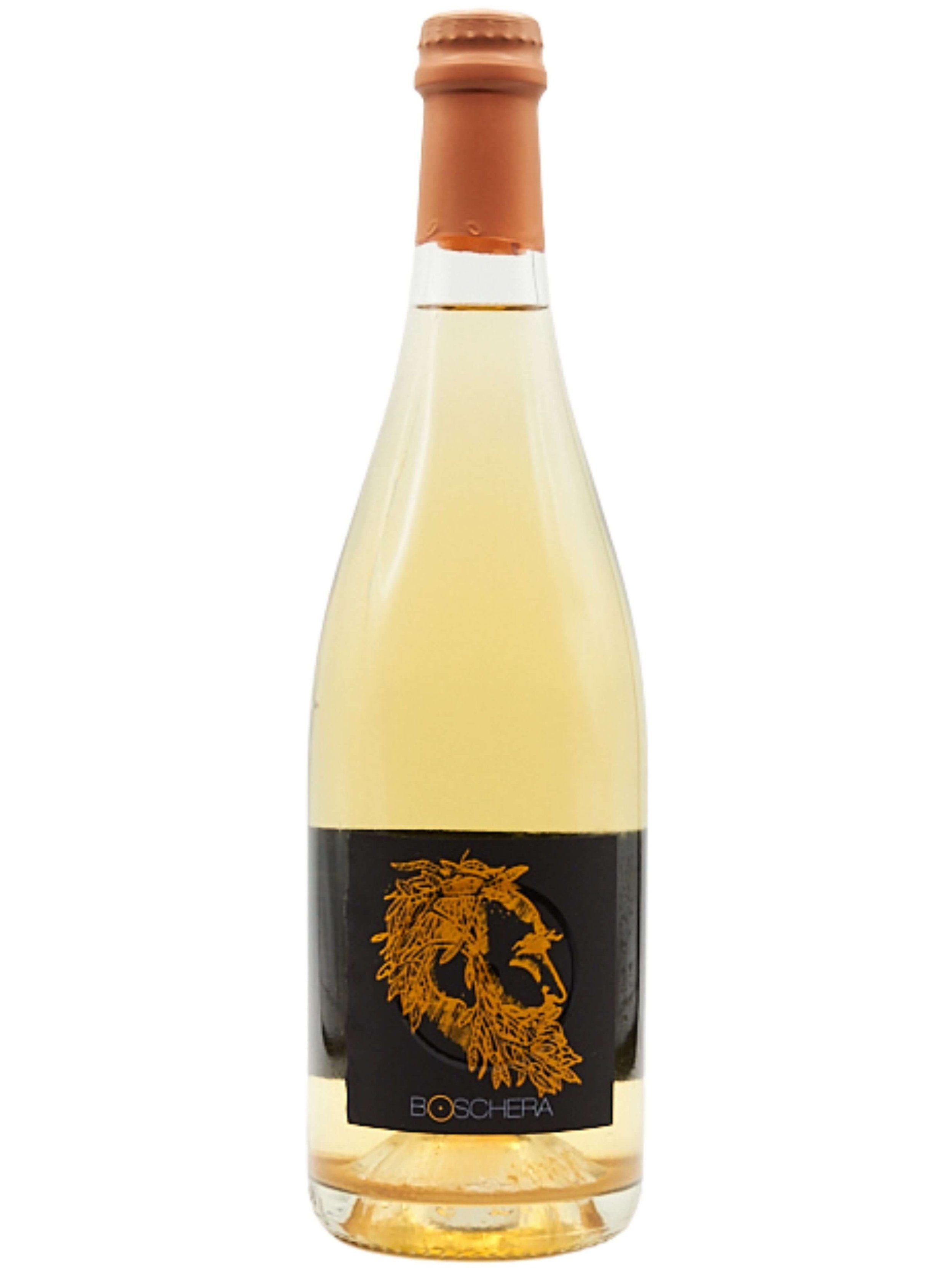All About Umami
Do you remember the photo of the human tongue with colored blotches representing the areas where you can ‘taste’ different flavors?
Since our high school days, there have been key developments in the world of flavor. The first is that the tongue image mentioned previously is no longer true. You can taste different senses all over the tongue, not only in specific ‘zones’ of the tongue. Another development is the growing popularity of the buzzword ‘umami’. But before we dive into the world of umami in food, wine, and what it means for your pairings, let’s go over a quick recap of the flavors.
Mushrooms, like in this mushroom pasta sauce, are often full of umami flavors.
We are all familiar with the four main tastes: sweet, sour, bitter, and salty; you can imagine firly easily the sensations of tasting sweet sugar, acidic lemon juice, bitter radishes, or salty chips. These tastes, flavors, and sensations all are ‘felt’ by our taste buds covering the tongue.
This is another reason that the old-fashioned ‘tongue map’ is outdated: we now know that each individual taste bud has receptors for each taste. Each of these tastes are represented by the mixtures of chemical compounds inside the foods & beverages as they react with our taste buds, saliva, and each other as we eat and drink.
Another fun fact is that every person will have different perception levels for these compounds; for example what may seem really sweet to one person may not be to another person, and the same goes for bitterness, acidity, saltiness, etc. These perceptions are based on culture, experiences, habits, personal likes and dislikes, and many other factors as well.
What is Umami?
Umami is considered the ‘fifth taste,’ after sweet, sour, bitter, and salty. It is often described as a sensation that is pleasant and savory yet that is distinct from sweet, sour, salty, and bitter flavors.
What is the umami flavor caused by? Umami flavors come from the presence of glutamate, an amino acid found in many foods, including meat, fish, vegetables, and dairy products that was discovered in the early 1900s by a Japanese scientist. In fact, MSG, or monosodium glutamate, is a great way to add umami flavors to a dish. This glutamate compound is responsible for the unique taste sensation of umami and is often used as a flavor enhancer in processed foods. It is also why the umami flavor is often associated with eastern asian cuisine, thanks to the pretty common use of this spice.
This umami taste is often described as a rich, savory, meaty, or broth-like flavor. It is different from other tastes in that it is not easily identifiable and can be difficult to describe. It is not really associated with a smell either, so it can be difficult to detect before actually tasting.
In summary, umami can enhance the overall flavor of food by balancing the other tastes: sweetness, sourness, saltiness, and bitterness.
Cod, like the baccalà used to make these ciccetti, is also rich in glutamate and umami flavors, especially when garnished with other umami rich foods like black olives and pickled capers.
In recent years, umami has gained attention in the culinary world, with chefs using umami-rich ingredients to enhance the flavor of their dishes. But where can we find it? The higher the presence of glutamate in a food is, the more umami flavor that will be perceptible.
It is often found in foods that are rich in protein, which is why it is commonly associated with meat and fish. However, umami can also be found in plant-based foods such as truffles, black olives, asparagus, mushrooms, tomatoes, and soy sauce. It is also common in pickled or fermented foods like kimchi or saurkraut. We see it in aged cheeses as well, with the most prevalant being an aged Parmiggiano Reggiano. Meats, like beef or bacon, tend to pick up more umami flavors the longer they are aged or cured, for example in the way that dry-aged beef has often much more depth of flavor due to its increased umami content. Lastly, a lot of seafood has high glutamate content and thus a lot of umami flavor. The prime examples are always given as seaweed and bonito flakes, but other fish like tuna, shrimp, sardines, and cod are also great examples of umami. Overall, there are so many great ways to use umami to add some extra dimension to a dish through adding strategic ingredients that are naturally rich in glutamates.
Umami Flavors in Wine
Can umami flavors be identified in wine?
Yes! Just like glutamate is found in many vegetables (especially as they become more ripe), glutamate is also naturally present in grapes. Its concentration can vary depending on the grape variety and ripeness level, but it is also formed during the winemaking process, especially during the fermentation stage, where yeast converts the grape's sugars into alcohol. The breakdown of yeast cells during fermentation releases glutamate, which contributes to the wine's overall umami taste.
This means that wines with extended contact with the lees or long yeast aging have higher probabilities of developing umami characteristics. Like with food, umami flavors present in wine can enhance the wine's flavor profile by complementing or balancing other taste components, such as acidity and bitterness. It can also provide a sense of depth and complexity to the wine's taste, making it more enjoyable and satisfying to drink. Sometimes, you can recognize ‘umami’ in wine as a more savory element that comes through. Remember, umami is a flavor, to unfortunately you won’t be able to tell if a wine has it until tasting, it cannot be smelled in the bouquet.
What are some examples of umami wines?
As a first try, you can taste a pet nat wine that are bottled ‘col fondo’, or on the lees. This means they have extended lees contact, which, as mentioned above, helps propogate glutamate and umami flavors. A wine like the Lambrusco red wine Essentia which is light in tannins and low in alcohol has that previously mentioned savory element that translates well into recognizing the umami flavor. Similarly, the white Boschera, also a pet nat wine bottled col fondo, is a rare grape that when made in this style, brings forth yeasty and nutty flavors that present its savoriness as an umami touch to the palate. This savory element also means the Boschera is a great pairing wine.
Pairing Wine and Food: Umami Edition
Speaking of pairings, let’s have a look at putting together some umami rich foods and wines. Now, a bit like always when pairing wine and food, there is a certain level of personal taste involved, and especially with an enigmatic flavor like umami that is often found in conjunction with other strong flavors, may not be perfect. But, now is the time to pull out your wabi-sabi attitude and embrace perfect imperfections.
As a general ground rule super high in umami foods will make a wine seem more astrigent, or harder. It might remove some body and make it feel more bitter or acidic on the palate. So when picking a wine to pair with an umami-rich dish, now it not the time to pull out a tannin-rich big bold wine like a Barolo. We want to select a wine that will not overpower the dish, as no doubt when selecting it we wanted those umami flavors. For this reason, a lot of natural wines work well with umami dishes. Here as well, we want to look for wines like orange wines like the Saturnia Bianco, which we have previously noted is a great wine for difficult pairings. Otherwise extended lee contact wines are another avenue to look for. Try out something like the champagne method Durello, aged for 60 months on the lees for a full sparkling wine. Another category of wine that works well with umami foods are those not aged in oak, so an unoaked white wine aged for several months in contact with its lees like the buttery blend Marchese Japo could be another option for you.
As one last note, savory wines like Boschera and Essentia are great wines to pair with so many different dishes as they generally go really well with different types of flavors and foods. They are the kinds of wines that can be paired through all courses of a meal easily.
Enjoy exploring umami on your plate and in your glass!








